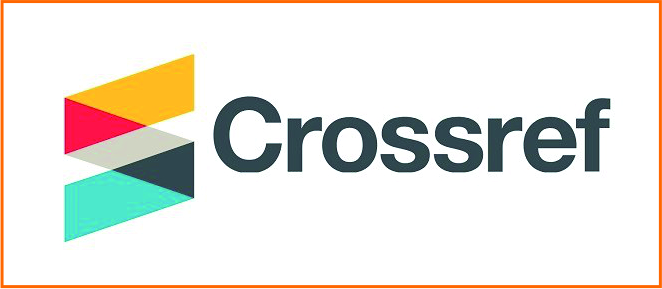Stakeholder Collaboration in Conservation and Tourism Area Management in Petengoran, Lampung Province
Abstract
Petengoran Mangrove Forest is an ecotourism area located between Sari Ringgung Beach and Dewi Mandapa Beach, precisely in Gebang Village, Padang Cermin Subdistrict, Pesawaran Regency. This area is a mangrove forest conservation site initiated in 2009. The conservation efforts were driven by the need to prevent malaria outbreaks that emerged in the same year. Consequently, the community voluntarily started rehabilitating the mangrove area for conservation purposes. The opening of this conserved mangrove area as a tourism destination needs to be analyzed to avoid negative impacts on various aspects of life. Therefore, the purpose of this study is to identify the characteristics of the Petengoran Mangrove Forest and develop strategies for collaborative stakeholder management that consider both conservation and tourism landscapes. The research methodology employed a mixed-method approach, combining qualitative and quantitative analyses. Qualitative data were obtained from key informants, while quantitative data were collected using the Mental Modeler application to provide weighted considerations for the forest area as a conservation and tourism landscape. The results indicate that in the stakeholder scenario, by considering the involvement of the government, private sector, and non-governmental organizations, the highest values were assigned to regulation with a score of 0.06, conservation with a score of 0.02, and tourism with a score of 0.01.
Keywords
Full Text:
PDFReferences
Barbier, E. B. (2017). Valuing ecosystem services: Methodological issues and case studies. Edward Elgar Publishing.
Chidakel, A., & Child, B. (2022). Convergence and divergence in the economic performance of wildlife tourism within multi-reserve landscapes. Land Use Policy, 120, 106252. doi:10.1016/j.landusepol.2022.106252
Dahuri, R. (2004). Keanekaragaman Hayati Laut. Aset Pembangunan Berkelanjutan Indonesia. Gramedia Pustaka Utama Jakarta.
Ellison, A. M. (2008). Managing mangroves with models: Policy perspectives from the human and natural sciences. Journal of Marine Science and Engineering, 6(1), 8.
Ellison, A. M., & Farnsworth, E. J. (Eds.). (2017). Mangrove Ecosystems: A Global Biogeographic Perspective. Springer.
Fathima Mafaziya Nijamdeen, T. W., Ratsimbazafy, H. A., Kodikara, K. A., Ashara Nijamdeen, T. W., Thahira, T., Peruzzo, S., . . . Hugé, J. (2023). Mangrove management in Sri Lanka and stakeholder collaboration: A social network perspective. Journal of Environmental Management, 330, 117116. doi:10.1016/j.jenvman.2022.117116
Fjeld, H., & Kähler Holm, L. (2019). Outdoor recreation in forests: A model for recreation design and management. Routledge.
Primavera, J. H. (2000). Development and conservation of philippine mangroves: Institutional issues. Ecological Economics, 35(1), 91-106.
Satyanarayana, B., Bhanderi, P., Debry, M., Maniatis, D., Foré, F., Badgie, D., Jammeh, K., Vanwing, T., Farcy, C., Koedam, N. And Dahdouh-Guebas, F., (2012). A Socio-Ecological Assessment Aiming At Improved Forest Resource Management And Sustainable Ecotourism Development In The Mangroves Of Tanbi Wetland National Park, The Gambia, West Africa. Ambio, 41(5), Pp.513-526.
Sugiyono. (2012). Metode Penelitian Kuantitatif, Kualitatif, dan Kombinasi (Mixed Methods). Bandung (ID) : Penerbit Alfabeta.
Undang-Undang Nomor 27, (2007). Pengelolaan Wilayah Pesisir dan Pulau-pulau Kecil.
Undang-Undang Nomor 26, (2007). Penataan Ruang
Undang-Undang, (2014). Pengelolaan Wilayah Pesisir dan Pulau-pulau Kecil.
Undang-Undang, (1999). Kehutanan
Undang-Undang Nomor 5 (1990). Sumber Daya Alam Hayati dan Ekosistemnya.
Undang-Undang Nomor 32 (2009). Perlindungan dan Pengelolaan Lingkungan Hidup.
Vargas-del-Río, D., & Brenner, L. (2023). Mangroves in transition. management of community spaces affected by conservation and tourism in Mexico. Ocean & Coastal Management, 232, 106439. doi:10.1016/j.ocecoaman.2022.106439
Yu, X., & Petter, S. (2014). Understanding agile software development practices using shared mental models theory. Information and Software Technology, 56(8), 911-921. doi:10.1016/j.infsof.2014.02.010
Setiawan, A., & Wijaya, D. (2021). Ekowisata mangrove: Strategi pengembangan dan manajemen. Gadjah Mada University Press.
Susetyo, H. B., & Masyhuri. (2019). Pengelolaan Ekowisata Mangrove Berbasis Konservasi di Pantai Utara Jawa. Yayasan Pustaka Obor Indonesia.
DOI: http://dx.doi.org/10.36448/ja.v15i1.4015

This work is licensed under a Creative Commons Attribution-NonCommercial-NoDerivatives 4.0 International License.
JURNAL ARSITEKTUR saat ini terindeks:











This work is licensed under a Creative Commons Attribution-NonCommercial 4.0 International License




